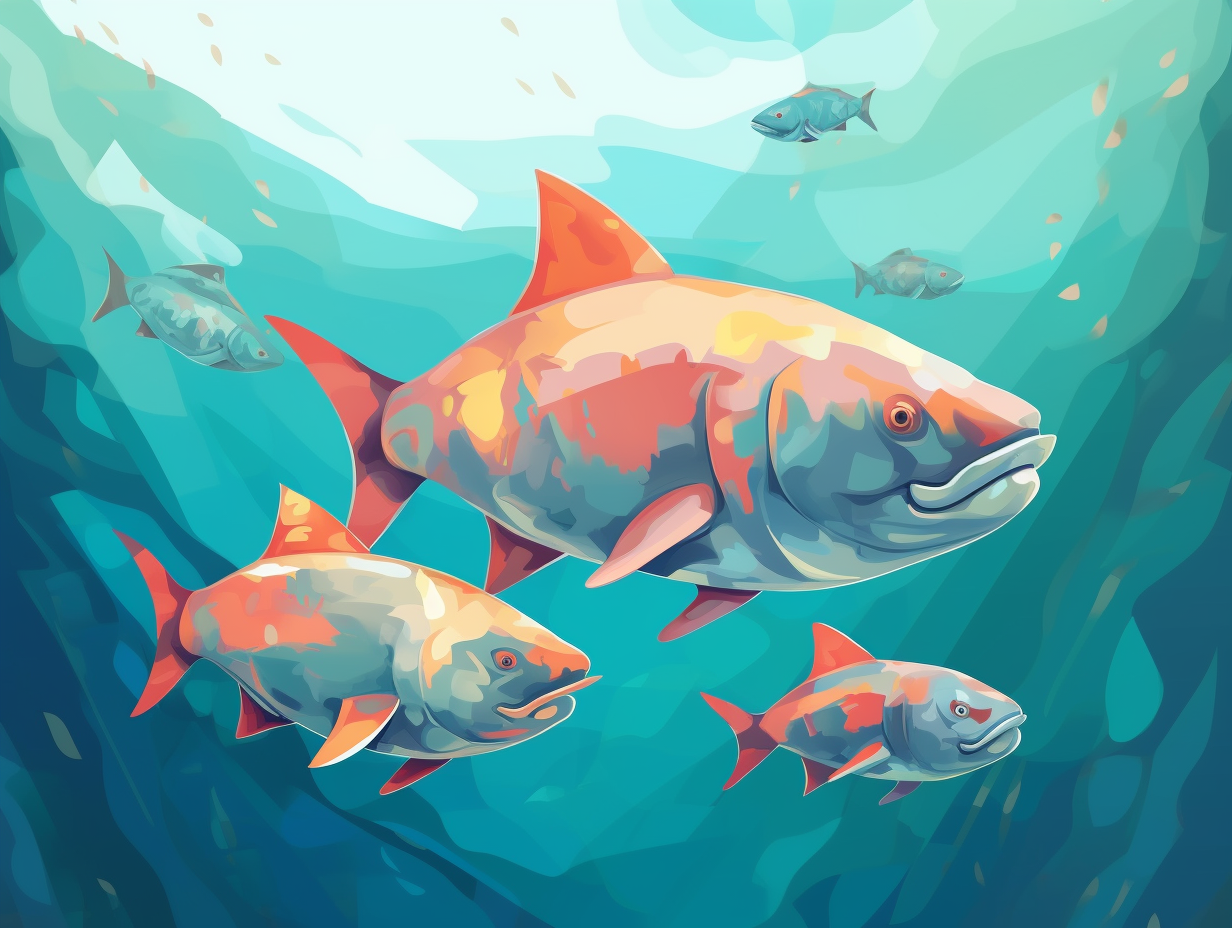Discover the Ocean's Apex Predators: 14 Jaw-Dropping Fun Facts About Sharks for Kids

1. Tiger Sharks: The Ocean's Buffet Kings
If the ocean were a buffet, tiger sharks would definitely be the ones loosening their belts and going back for thirds: These voracious eaters have a menu that includes everything from fish, squids, and sea snakes to dolphins, dugongs, and albatrosses – and they'll even gorge themselves on whale carcasses. Turtles, though? Not their favorite dish anymore!
Source => saveourseas.com
2. Shark Teeth: Pearly Whites Forever
Step aside, dentists of the world: sharks are the true masters of dental hygiene! Sporting perpetual pearly whites throughout their lives, these oceanic "tooth fairies" keep themselves constantly bristling with thousands of chompers, like a never-ending game of whack-a-tooth: Sharks have the astounding ability to regrow their teeth constantly, housing up to 3,000 teeth at once, spread across multiple rows, and replacing each fallen tooth within just a few days or months. This is due to a network of genes responsible for tooth development and regeneration, which humans also possess, paving the way for potential breakthroughs in human tooth loss treatments.
Source => medicalnewstoday.com

Did you know great white sharks are actually social creatures? 🦈💬 Discover how they form friendships and display unique hunting behaviors around Guadalupe Island, Mexico! 🌊🏝️
=> Fun Facts about Great-White-Sharks
3. Sibling Rivalry: Intrauterine Cannibalism
Talk about sibling rivalry! Shark families take the term "cutthroat competition" to a whole new level: Some shark pups actually practice intrauterine cannibalism, devouring their own siblings while still in their mother's womb to increase their chances of survival and growth after birth.
Source => americanoceans.org
4. Sharks: The Ocean's Floatation Devices
Step aside, rubber duckies: Sharks are the true floatation devices of the ocean! In a jaw-some twist, it turns out that a shark's liver makes up to 25% of its total weight and is chock full of oil that helps them stay buoyant. The more well-fed a shark is, the easier it floats, as the extra fat in their liver provides that much-needed oomph for those long migratory swims.
Source => fieldmuseum.org

5. Greenland Sharks: An Ancient Love Story
If Greenland sharks were an old, wise grandpa, they'd tell tales of 156 years of waiting to find "the one": Female Greenland sharks can only reproduce when they reach around 156 years old. These ancient sea creatures grow at a glacial pace of 1 centimeter a year, living for over 400 years, thanks to their chilly Arctic and sub-Arctic waters slowing down their metabolism and biochemical activity.
Source => science.org
6. Female Great Whites: The Aquaqueens
Move over, Aquaman, there's a new queen ruling the seas: Female great white sharks are larger and more dominant than males, with famous ones like Mary Lee and Deep Blue proving that these powerful fish don't need a trident to lead the underwater world.
Source => usa.oceana.org
7. Whale Sharks: Gentle Giants' Veggie Feast
Big-mouthed, gentle giants checking into an all-inclusive buffet: Whale sharks, the largest fish in the sea, don't munch on humans or bigger creatures, but rather have a palate for tiny plants, fish, fish eggs, and other small critters that they conveniently sieve through their colossal mouths.
Source => a-z-animals.com
8. Shark Skin: Sleepy Time Tea Party of Teeth
Ready for some jaws-dropping info? Shark skin is like a never-ending Sleepy Time tea party of teeth: The rough, sandpaper-like texture of shark skin is actually made up of tiny tooth-like structures called denticles, which not only make them faster swimmers but can even reduce their energy use by up to 5.9 percent! Bonus material: Scientists are creating artificial shark skin for flexible underwater robots, so brace yourselves for the rise of the robo-sharks!
Source => popularmechanics.com
9. Shark-nado: Navigating with Magnetic Fields
Call it Shark-nado, but with a better compass: sharks possess the incredible ability to detect changes in the Earth's magnetic field, allowing them to potentially navigate vast distances using this unique sensory skill.
Source => himb.hawaii.edu

10. Fin-ancial Crisis: Stop the Shark Finning!
In a "fin-ancial" crisis of their own, sharks are diversifying into the soup business - with tons of their valuable fins ending up on the wrong side of the kitchen counter: Shockingly, humans kill 100 million sharks annually, with many falling victim to the brutal practice of shark finning. This not only puts shark populations in peril, but also disrupts entire marine ecosystems where these fin-tastic predators play a crucial role. Spread the word and let's fight for a fin-free future with effective regulations and shark-savvy education!
Source => hsi.org
11. Shark Reality TV: Keeping up with the Embryos
You might say sharks have been keeping up with the Kardashians for centuries with their own version of reality TV: "Keeping up with the Embryos": Some species of sharks, skates, rays, and chimeras practice internal fertilization, allowing their young to develop in eggs within the mother's body and sometimes even be born as tiny adults! Other shark moms produce egg cases that are left on the ocean floor, in shapes like pillows or corkscrews, before the little pup hatches and swims away, leaving behind what's known as a "mermaid's purse" – beachcombers are sure to love this hot gossip!
Source => sharks.org
12. Viviparous Sharks: Reptilian Role Models
Just when you thought it was safe to assume sharks were the egg-laying, scaly serpents of the sea: hold your snorkels, kiddos! Some sharks, like bull sharks and requiem sharks, are actually viviparous – meaning they carry their young inside them and give birth to live babies, much like reptilian role models such as rattlesnakes.
Source => animalcorner.org
13. Hammerheads: Shockingly Good Electricians
What do you get when you cross a hammerhead shark with an electrician? A shark who's shockingly good at finding dinner: Hammerhead sharks have a unique organ called the ampullae of Lorenzini that allows them to sense the electrical fields of their prey hiding beneath the sand, acting as a supercharged sixth sense and making them experts at tracking down meals in their aquatic world.
Source => oceanconservancy.org
14. Shark Body Language: Sherlock Holmes with Fins
Who knew that sharks were the ultimate body language interpreters, like Sherlock Holmes with fins? No need for Dr. Watson here: Sharks can actually read human emotions through body language, and even communicate using their own set of gestures like fluffing their gills and dropping their pectorals. So, next time you meet one, remember to keep your cool and exude good vibes!
Source => blog.padi.com
Related Fun Facts




















